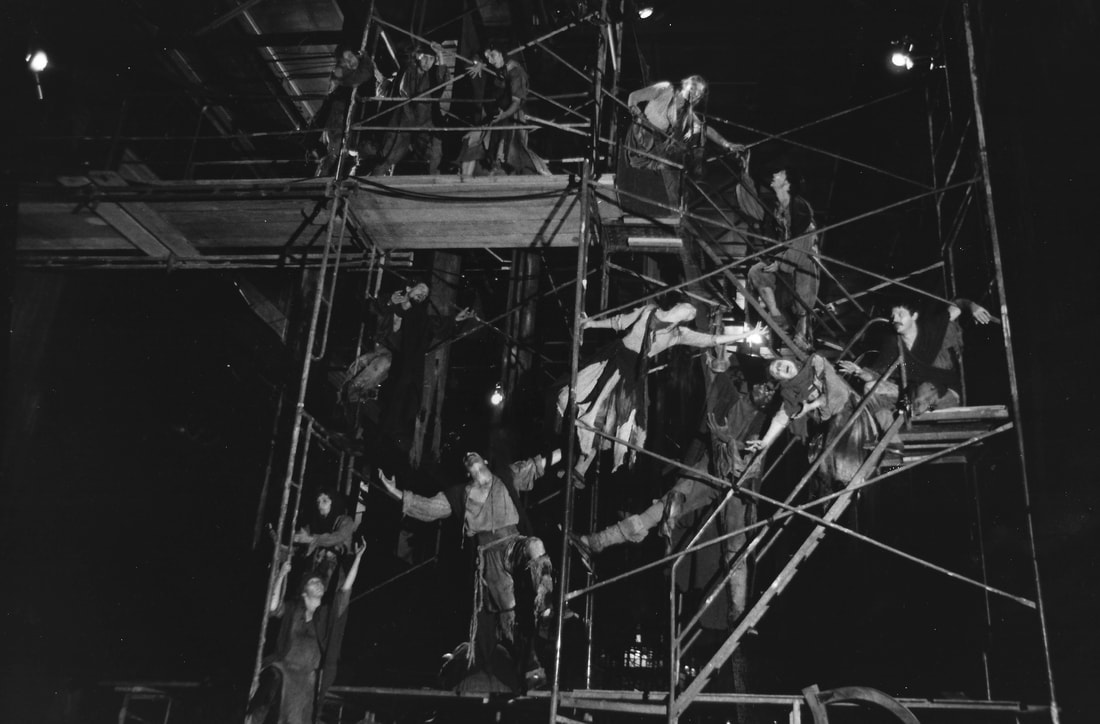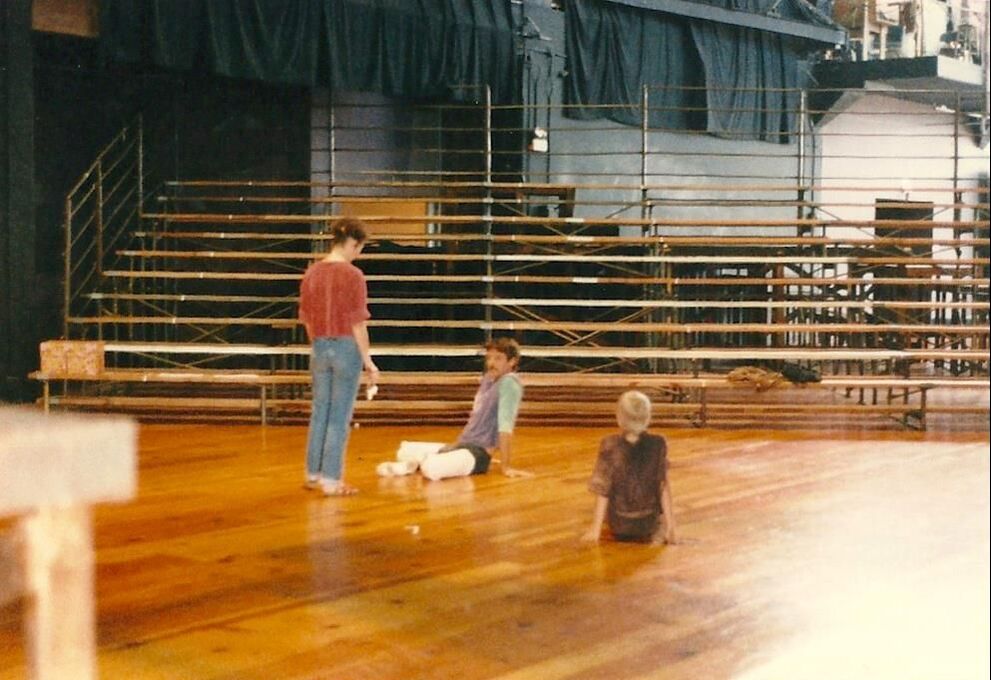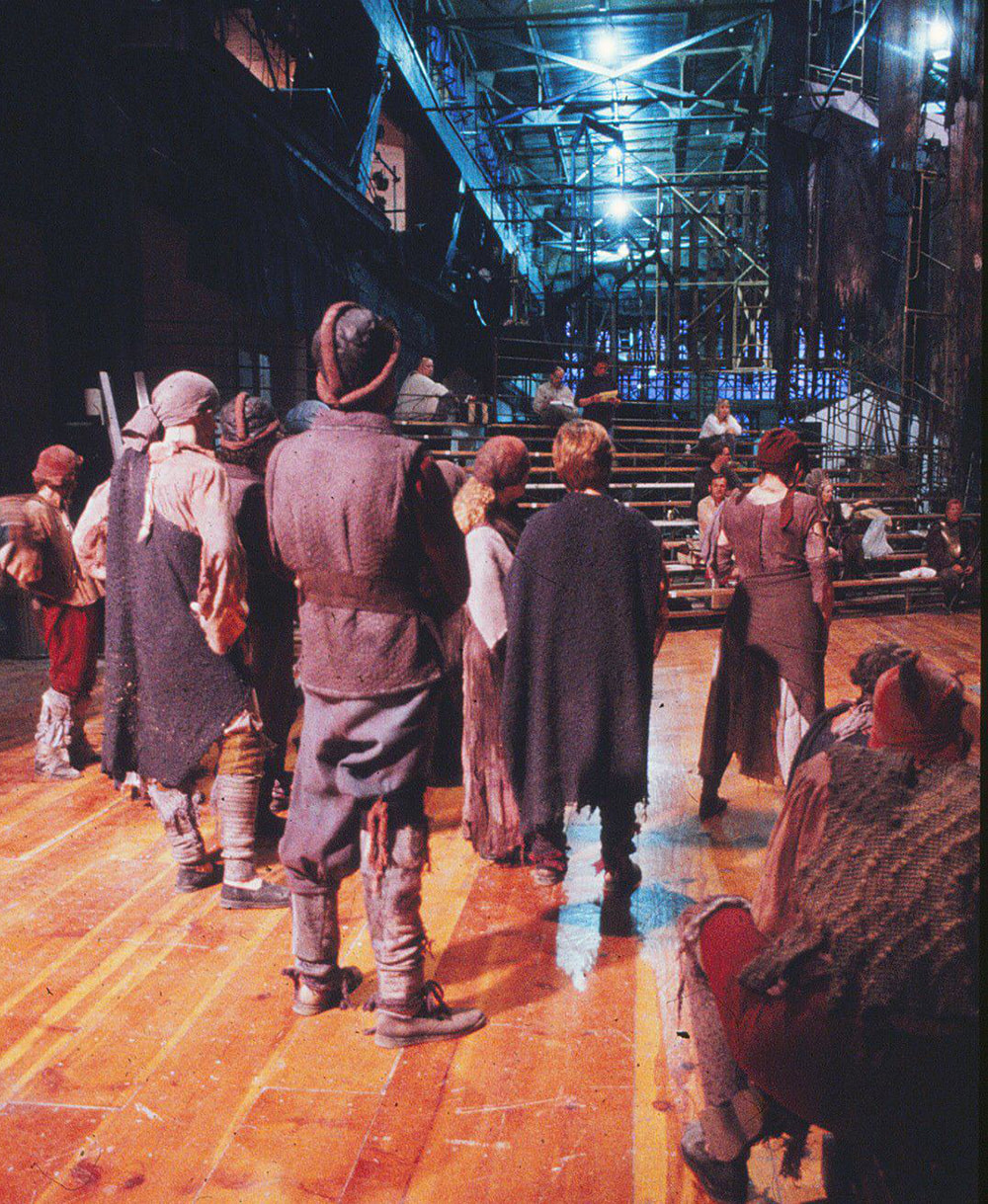Theater Artaud, San Francisco |
David Schein wrote Tokens specifically for the large open space of Theater Artaud. Now called Z Space, the theater is housed in a former American Can Factory that became the renowned artists' co-op, Project Artaud. It was, at the time of Tokens, a completely open space 200' x 40' (2/3 a football field) with a 40' ceiling and no fixed seating.
Following the historical precedent of the Great Plague, Schein envisaged a Gate that separated the audience from the quarantined citizens who were only admitted into the performance area, "the City of London", audience were admitted after they presented their "Certificates of Health," (tickets). The audience was ushered by officials into the City, where they were greeted by a chorus of sixty dancing and singing citizens, many of whom bore "tokens," the buboes that were visible signs of infection with bubonic plague.
Funeral processions threaded through the audience and the simulated proximity of the "infected" to the audience emphasized the virulent danger of infection at that time. During the course of the performance the audience often were comingled with the citizens and guided by officials to three staging areas; Inside the Gate, the House, and the Plague Pit.
Designer Peter Heth, who died from AIDS a year after the performance, created a city made of fabric that hung from the 40' high ceiling of the theater, and from scaffolding, which was color coordinated with the costumes and makeup of the performers.
Following the historical precedent of the Great Plague, Schein envisaged a Gate that separated the audience from the quarantined citizens who were only admitted into the performance area, "the City of London", audience were admitted after they presented their "Certificates of Health," (tickets). The audience was ushered by officials into the City, where they were greeted by a chorus of sixty dancing and singing citizens, many of whom bore "tokens," the buboes that were visible signs of infection with bubonic plague.
Funeral processions threaded through the audience and the simulated proximity of the "infected" to the audience emphasized the virulent danger of infection at that time. During the course of the performance the audience often were comingled with the citizens and guided by officials to three staging areas; Inside the Gate, the House, and the Plague Pit.
Designer Peter Heth, who died from AIDS a year after the performance, created a city made of fabric that hung from the 40' high ceiling of the theater, and from scaffolding, which was color coordinated with the costumes and makeup of the performers.



